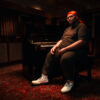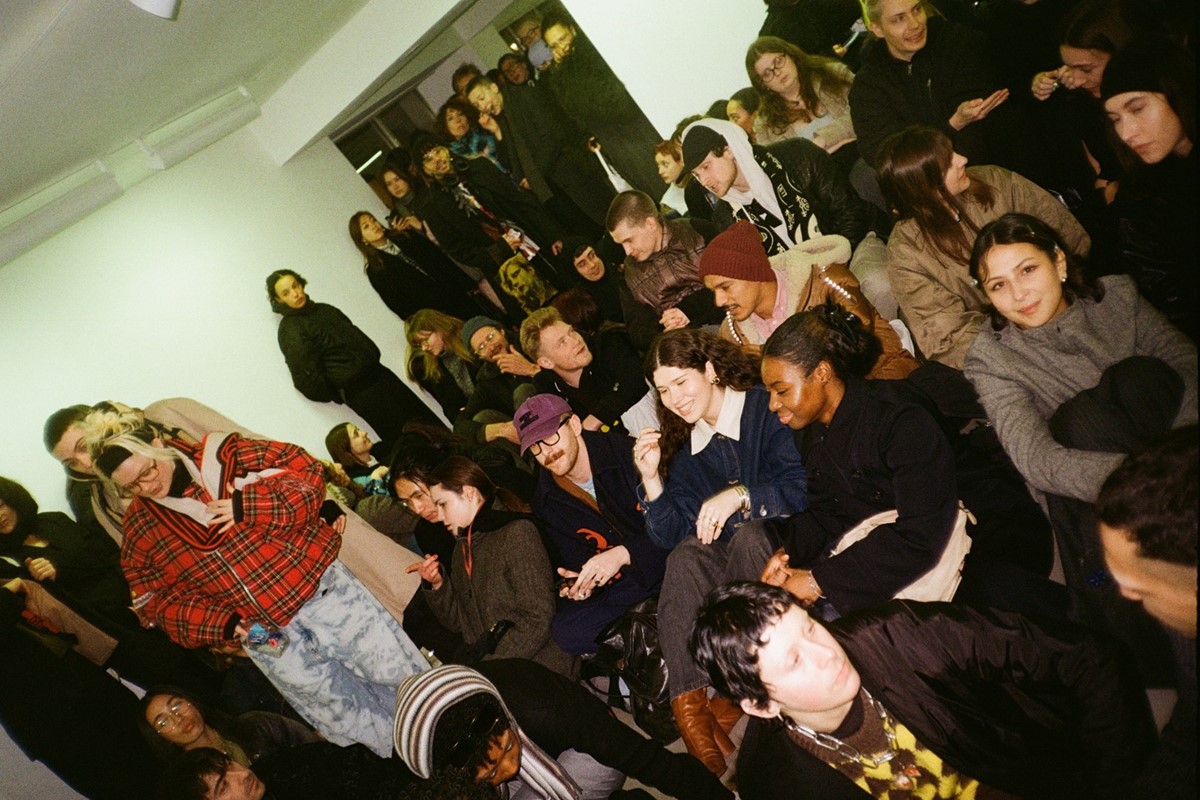
Rewrite
Lead ImageGargle by Climax Books at Sadie Coles HQCourtesy of Sadie Coles HQ
Something intriguing is happening in London at the moment. Despite punishingly high living costs and an inescapably dystopian news cycle, people seem to be out and about, but not just in the latest bars and restaurants popping up every other week. Niche literary readings are packed out like gigs; esoteric talks at art institutions sell out in mere days; and busy emerging gallery openings spill out onto the city’s streets. In the face of a downturn, there seems to be a new hunger not just to gather, but to share in something more specific – in culture and ideas. “It’s unprecedented,” gallerist Sadie Coles says, speaking over the phone. “It feels like 30 years ago.”
The moment she is referencing is the genesis of the Young British Artists. One of the most powerful figures in the art world, Coles played an instrumental role in the boundary-shattering rise of the group, hosting transgressive exhibitions in warehouse spaces across the city that would shape the careers of legends like Sarah Lucas and Angus Fairhurst. Since officially founding her namesake gallery in 1997, Coles hasn’t stopped fostering new schools of provocation. Today, her world is split between three Sadie Coles sites – Davies Street in Mayfair and Kingly Street in Soho – and she represents several of contemporary art’s most distinctive forces, including Martine Syms, Lawrence Lek and Alvaro Barrington.
Coles’ latest endeavour is Gargle, an invitational programme of monthly live events hosted in the Sadie Coles HQ spaces. It follows in the spirit of The Shop project, which was developed with young gallerist Sam Will in 2021 as a platform to support a new vanguard of curatorial talent. Gargle takes a slightly different tack, forming one energised evening of talks, performances and readings hosted by a selected platform, publication, or individual. The first was hosted last week by Climax Books founder Isabella Burley, and featured performances by queer artists Del LaGrace Volcano and Rene Matić, writer Charlie Fox and stylist Clara Mary Joy. Keeping things fun, there was also a “sexy books exchange”, where attendees could bring a forbidden book and receive one in return.
Ahead of the next Gargle – set to be hosted by Jack Self, founder of the independent magazine Real Review, in March – Coles discusses supporting younger spaces and why poetry nights are better than dating apps.
Orla Brennan: When you opened Sadie Coles HQ in the 1990s, what was your vision for the gallery?
Sadie Coles: It opened with two exhibitions, one in the gallery by John Currin, the American painter, and one in a warehouse with Sarah Lucas, which was in Old Street. That established what I wanted the gallery to reflect – a kind of international programme of artists and a different way of thinking about exhibition-making.
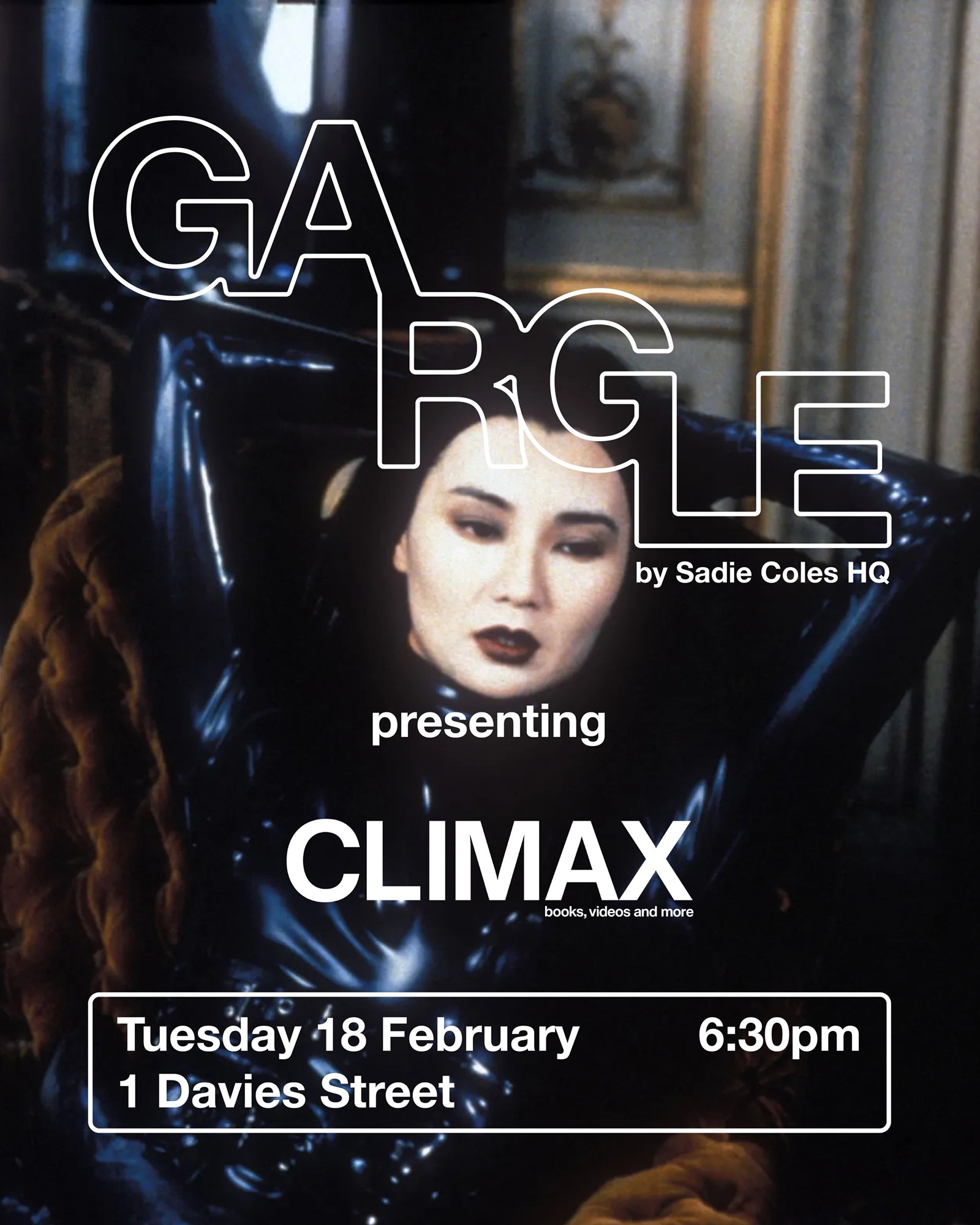
OB: You’ve spoken before about being a gallerist as a balance of “nurturing and enabling”. How do you see your role as a gallerist today?
SC: I don’t think it’s changed – it’s exactly that. Obviously the business has changed a lot since the late 90s with the internet, which has taken things from local to global in a really specific way. But the programme we’re running is a reflection of the fact that, actually, people seem to want to have real experiences.
OB: The Shop initiative was founded in 2021. What was the initial idea behind it?
SC: There was a sense during the pandemic of coming together in the gallery community in London, [of] everybody helping each other. So it really came out of that. What can we do that’s useful? It seemed like a very sensible use of our spaces.
OB: What’s been the after-effect of The Shop? What have you learnt from it?
SC: It’s a real two-way street for me because I’ve learned a lot about artists I wouldn’t otherwise know about. We’ve expanded our relationships with the gallery network in London, which at the moment is in an incredibly vibrant time despite the economic difficulties in the world.
OB: What was the thinking behind the name Gargle?
SC: I wanted a word that wasn’t too literary but had this feeling of a performative action. Gargle should suggest performance, spoken word, sound, music. It just seemed to me to be all-encompassing, with lots of possibilities.
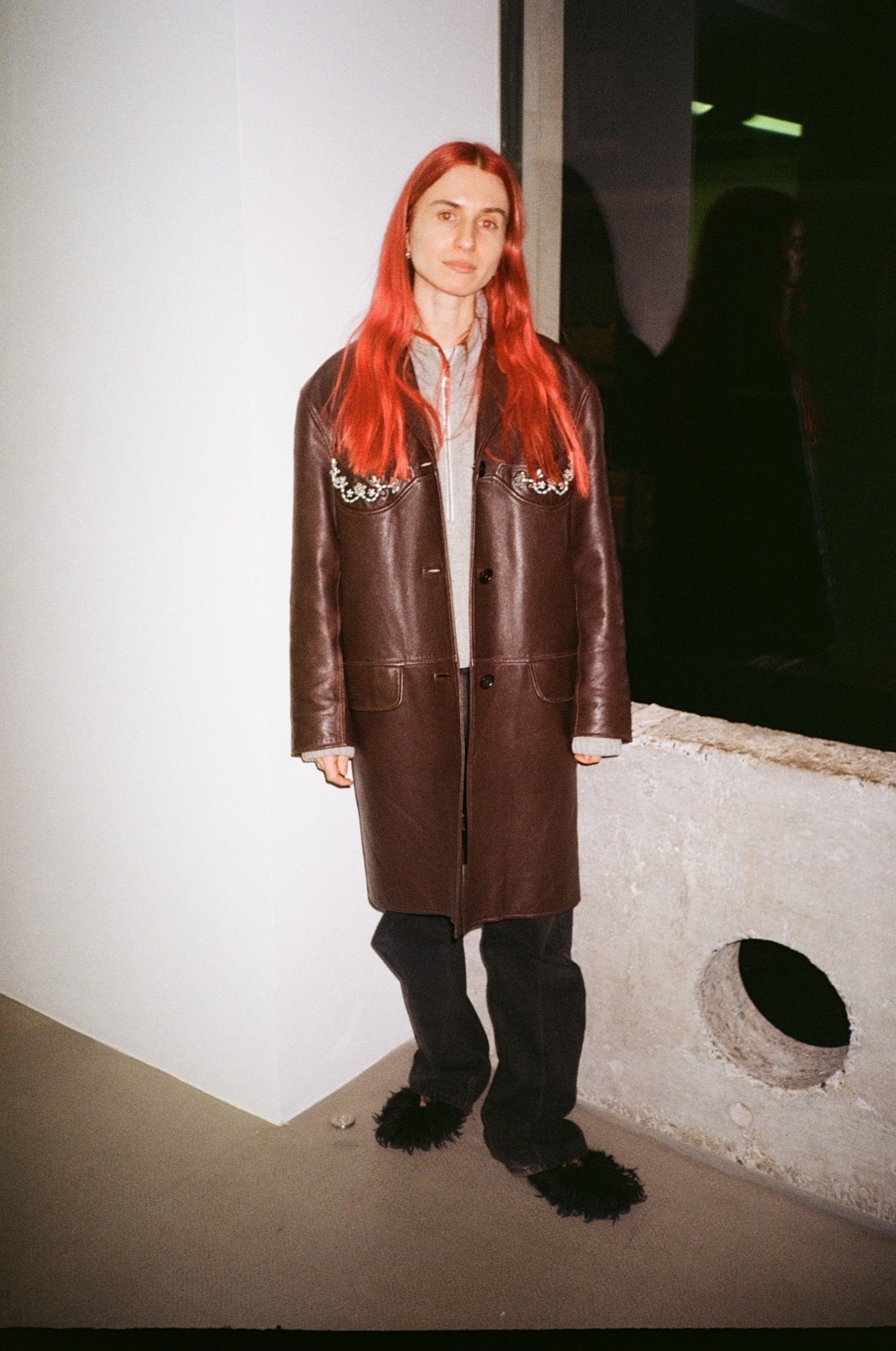
OB: Why host performances, readings, and poetry in a gallery setting?
SC: Well, partly because a friend of mine in New York said poetry nights are the new Tinder, which made me laugh. I think people really do want to get together in some way, and we’ve seen a resurgence of attendance at live music, theatre and dance performances. It definitely seems that people are seeking out specific experiences that are, to a certain extent, harder to find.
OB: Why do you think there’s a demand for events like this in London now? Are we oversaturated by our digital lives?
SC: Yes, absolutely. People are bored of their screens. That’s really the point of Gargle – it’s an experience that’s more real than swiping left.
OB: The first event was curated by Isabella Burley. You invited her to open a pop-up shop for Hardcore in 2023 [a group show exploring extreme dynamics of sex]. Why did you invite her to host the first evening?
SC: She was so thoughtful and smart [about the curation for Hardcore]. Climax had a bookshop in the lobby that was curated every couple of days, so the books would change, which would change the way one was introduced to the exhibition upstairs. It was just very intelligent, which is why I asked Isabella to do the first one.
“That’s really the point of Gargle – it’s an experience that’s more real than swiping left” – Sadie Coles
OB: How have you gone about selecting the upcoming curators?
SC: There are many outstanding cultural curators in the literary world right now, and lots of fan-ziney, small-run print publications that are doing a great job at giving a platform to younger voices, younger poets, younger writers – from Worms and Real Review to Heavy Traffic. There’s also a group called Adult Entertainment, who are more poetry-based. I basically saw there was a lot of potential.
OB: As an established gallerist, why do you feel it’s important to support these younger groups?
SC: It’s important as a gallery that you have a sense of renewal and that it’s a place for not just one generation. I feel it’s giving me something really tangible and special. It was so fantastic on Tuesday at Gargle to hear all these talented voices and to engage with an audience of young people. I was literally three decades older than anyone else in that room. It was actually a fantastic feeling.
OB: We are living in fraught political and economic times. In a moment of increasing polarisation, what can galleries offer us that other arenas of communication can’t?
SC: That’s a very good point, actually, because at the end of the day, we have these big spaces. If we can use them to engage an audience, to host an audience, then I think that’s really, really important. It’s about activation.
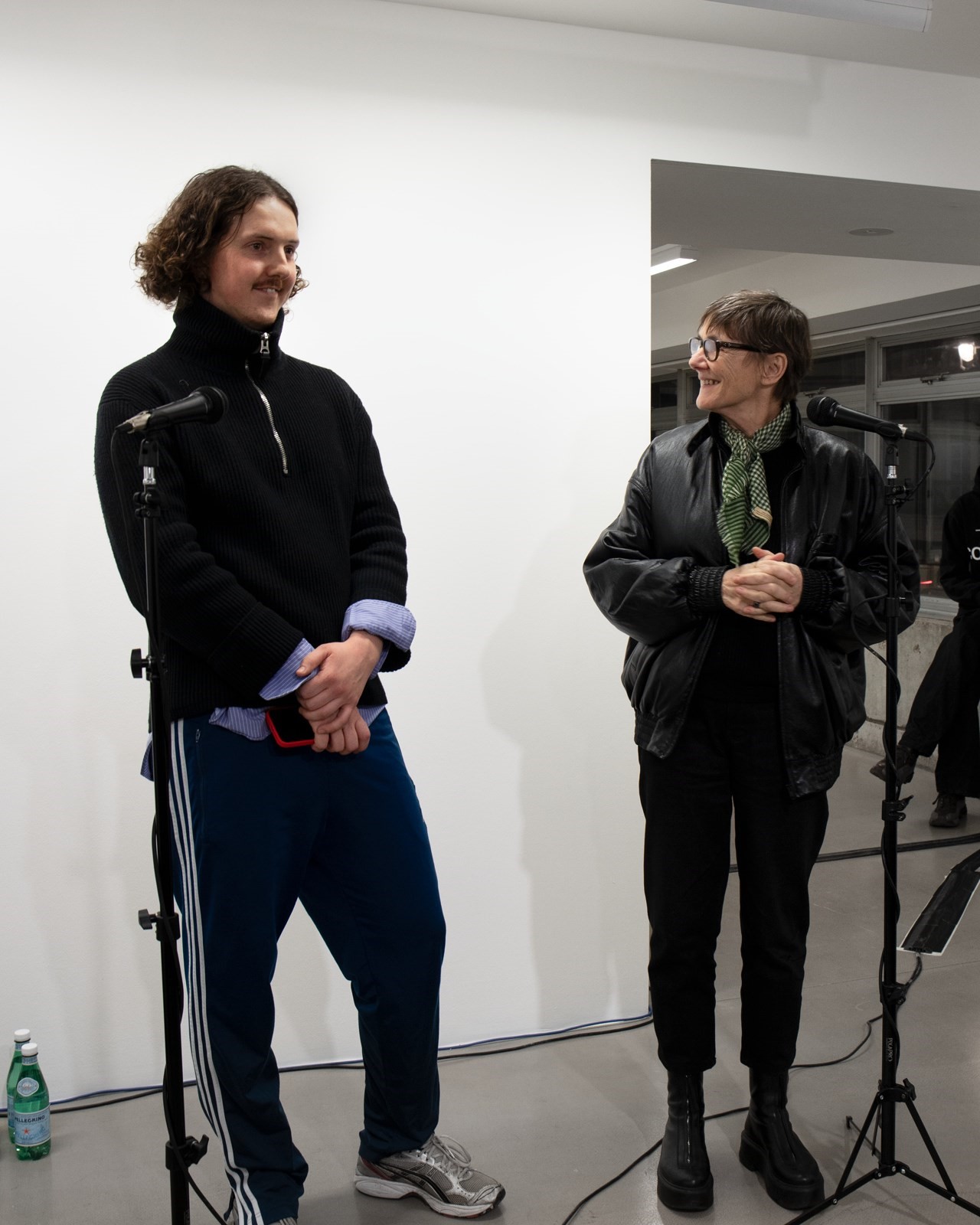
OB: During times like these, do you see galleries as places for resistance or refuge, or possibly both?
SC: I think you just need to let people speak. I’m not defining what I’m resisting or not – I wouldn’t want to impose that on anyone. I just believe passionately in free speech.
OB: Despite all the turbulence, this feels like a really vibrant time for London. Why do you think that is?
SC: I think there’s more possibility, partly because of the economic downturn. It means that there are empty shops everywhere and landlords who are prepared to do short leases. There is a big community here. There are fantastic art schools who are churning out wonderful artists all the time. There’s just great energy, a kind of do-it-yourself attitude that is making for a very strong new generation of spaces.
OB: What do you hope visitors might come away from a Gargle event with?
SC: It’s funny, Charlie Fox asked me what I did after the opening, and I said, “I went home to read!” One should feel inspired. I can only speak for myself, but it made me feel really inspired by culture and cultural producers. I hope that people leave Gargle, go to the pub and talk about what they’ve listened to or what they’ve seen. I hope that it grows, and that there are more events like this everywhere.
Find out more about Sadie Coles HQ here.
in HTML format, including tags, to make it appealing and easy to read for Japanese-speaking readers aged 20 to 40 interested in fashion. Organize the content with appropriate headings and subheadings (h1, h2, h3, h4, h5, h6), translating all text, including headings, into Japanese. Retain any existing
tags from
Lead ImageGargle by Climax Books at Sadie Coles HQCourtesy of Sadie Coles HQ
Something intriguing is happening in London at the moment. Despite punishingly high living costs and an inescapably dystopian news cycle, people seem to be out and about, but not just in the latest bars and restaurants popping up every other week. Niche literary readings are packed out like gigs; esoteric talks at art institutions sell out in mere days; and busy emerging gallery openings spill out onto the city’s streets. In the face of a downturn, there seems to be a new hunger not just to gather, but to share in something more specific – in culture and ideas. “It’s unprecedented,” gallerist Sadie Coles says, speaking over the phone. “It feels like 30 years ago.”
The moment she is referencing is the genesis of the Young British Artists. One of the most powerful figures in the art world, Coles played an instrumental role in the boundary-shattering rise of the group, hosting transgressive exhibitions in warehouse spaces across the city that would shape the careers of legends like Sarah Lucas and Angus Fairhurst. Since officially founding her namesake gallery in 1997, Coles hasn’t stopped fostering new schools of provocation. Today, her world is split between three Sadie Coles sites – Davies Street in Mayfair and Kingly Street in Soho – and she represents several of contemporary art’s most distinctive forces, including Martine Syms, Lawrence Lek and Alvaro Barrington.
Coles’ latest endeavour is Gargle, an invitational programme of monthly live events hosted in the Sadie Coles HQ spaces. It follows in the spirit of The Shop project, which was developed with young gallerist Sam Will in 2021 as a platform to support a new vanguard of curatorial talent. Gargle takes a slightly different tack, forming one energised evening of talks, performances and readings hosted by a selected platform, publication, or individual. The first was hosted last week by Climax Books founder Isabella Burley, and featured performances by queer artists Del LaGrace Volcano and Rene Matić, writer Charlie Fox and stylist Clara Mary Joy. Keeping things fun, there was also a “sexy books exchange”, where attendees could bring a forbidden book and receive one in return.
Ahead of the next Gargle – set to be hosted by Jack Self, founder of the independent magazine Real Review, in March – Coles discusses supporting younger spaces and why poetry nights are better than dating apps.
Orla Brennan: When you opened Sadie Coles HQ in the 1990s, what was your vision for the gallery?
Sadie Coles: It opened with two exhibitions, one in the gallery by John Currin, the American painter, and one in a warehouse with Sarah Lucas, which was in Old Street. That established what I wanted the gallery to reflect – a kind of international programme of artists and a different way of thinking about exhibition-making.

OB: You’ve spoken before about being a gallerist as a balance of “nurturing and enabling”. How do you see your role as a gallerist today?
SC: I don’t think it’s changed – it’s exactly that. Obviously the business has changed a lot since the late 90s with the internet, which has taken things from local to global in a really specific way. But the programme we’re running is a reflection of the fact that, actually, people seem to want to have real experiences.
OB: The Shop initiative was founded in 2021. What was the initial idea behind it?
SC: There was a sense during the pandemic of coming together in the gallery community in London, [of] everybody helping each other. So it really came out of that. What can we do that’s useful? It seemed like a very sensible use of our spaces.
OB: What’s been the after-effect of The Shop? What have you learnt from it?
SC: It’s a real two-way street for me because I’ve learned a lot about artists I wouldn’t otherwise know about. We’ve expanded our relationships with the gallery network in London, which at the moment is in an incredibly vibrant time despite the economic difficulties in the world.
OB: What was the thinking behind the name Gargle?
SC: I wanted a word that wasn’t too literary but had this feeling of a performative action. Gargle should suggest performance, spoken word, sound, music. It just seemed to me to be all-encompassing, with lots of possibilities.

OB: Why host performances, readings, and poetry in a gallery setting?
SC: Well, partly because a friend of mine in New York said poetry nights are the new Tinder, which made me laugh. I think people really do want to get together in some way, and we’ve seen a resurgence of attendance at live music, theatre and dance performances. It definitely seems that people are seeking out specific experiences that are, to a certain extent, harder to find.
OB: Why do you think there’s a demand for events like this in London now? Are we oversaturated by our digital lives?
SC: Yes, absolutely. People are bored of their screens. That’s really the point of Gargle – it’s an experience that’s more real than swiping left.
OB: The first event was curated by Isabella Burley. You invited her to open a pop-up shop for Hardcore in 2023 [a group show exploring extreme dynamics of sex]. Why did you invite her to host the first evening?
SC: She was so thoughtful and smart [about the curation for Hardcore]. Climax had a bookshop in the lobby that was curated every couple of days, so the books would change, which would change the way one was introduced to the exhibition upstairs. It was just very intelligent, which is why I asked Isabella to do the first one.
“That’s really the point of Gargle – it’s an experience that’s more real than swiping left” – Sadie Coles
OB: How have you gone about selecting the upcoming curators?
SC: There are many outstanding cultural curators in the literary world right now, and lots of fan-ziney, small-run print publications that are doing a great job at giving a platform to younger voices, younger poets, younger writers – from Worms and Real Review to Heavy Traffic. There’s also a group called Adult Entertainment, who are more poetry-based. I basically saw there was a lot of potential.
OB: As an established gallerist, why do you feel it’s important to support these younger groups?
SC: It’s important as a gallery that you have a sense of renewal and that it’s a place for not just one generation. I feel it’s giving me something really tangible and special. It was so fantastic on Tuesday at Gargle to hear all these talented voices and to engage with an audience of young people. I was literally three decades older than anyone else in that room. It was actually a fantastic feeling.
OB: We are living in fraught political and economic times. In a moment of increasing polarisation, what can galleries offer us that other arenas of communication can’t?
SC: That’s a very good point, actually, because at the end of the day, we have these big spaces. If we can use them to engage an audience, to host an audience, then I think that’s really, really important. It’s about activation.

OB: During times like these, do you see galleries as places for resistance or refuge, or possibly both?
SC: I think you just need to let people speak. I’m not defining what I’m resisting or not – I wouldn’t want to impose that on anyone. I just believe passionately in free speech.
OB: Despite all the turbulence, this feels like a really vibrant time for London. Why do you think that is?
SC: I think there’s more possibility, partly because of the economic downturn. It means that there are empty shops everywhere and landlords who are prepared to do short leases. There is a big community here. There are fantastic art schools who are churning out wonderful artists all the time. There’s just great energy, a kind of do-it-yourself attitude that is making for a very strong new generation of spaces.
OB: What do you hope visitors might come away from a Gargle event with?
SC: It’s funny, Charlie Fox asked me what I did after the opening, and I said, “I went home to read!” One should feel inspired. I can only speak for myself, but it made me feel really inspired by culture and cultural producers. I hope that people leave Gargle, go to the pub and talk about what they’ve listened to or what they’ve seen. I hope that it grows, and that there are more events like this everywhere.
Find out more about Sadie Coles HQ here.
and integrate them seamlessly into the new content without adding new tags. Ensure the new content is fashion-related, written entirely in Japanese, and approximately 1500 words. Conclude with a “結論” section and a well-formatted “よくある質問” section. Avoid including an introduction or a note explaining the process.
